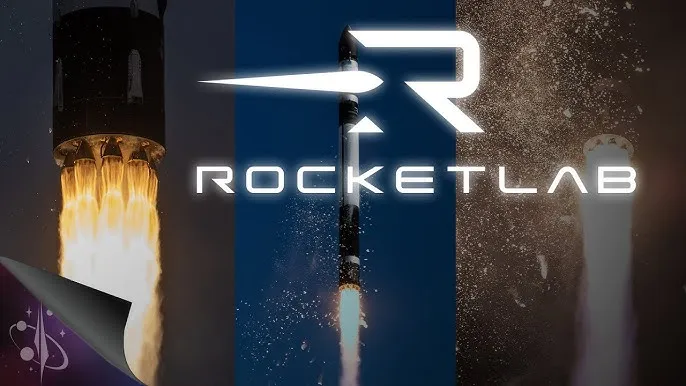
Rocket Lab Accelerates Launch Schedule to Deploy HawkEye 360 Mission Within 48 Hours
Rocket Lab Corporation (Nasdaq: RKLB), a prominent global provider of launch services and space systems, has announced an accelerated change to its mission manifest, advancing the next Electron rocket launch by several days. The upcoming mission, part of a multi-launch agreement with geospatial intelligence company HawkEye 360, is now scheduled to take off on June 26 UTC from Rocket Lab’s Launch Complex 1 (LC-1) in New Zealand.
This rapid rescheduling—just two days from the public announcement to liftoff—demonstrates Rocket Lab’s increasing agility and readiness to support time-sensitive customer missions. The launch, titled “Get The Hawk Outta Here,” will place four satellites into orbit to further HawkEye 360’s mission of global radio frequency (RF) signal detection and geolocation for national defense, intelligence, and commercial applications.
Swift Manifest Adjustment Highlights Rocket Lab’s Operational Agility
The rescheduling of this mission ahead of a previously slated Electron flight—now postponed for further pre-launch checkouts—highlights Rocket Lab’s capacity to pivot in real-time. As the commercial space industry matures, such responsiveness is becoming an increasingly critical metric for both government and commercial satellite operators seeking timely access to orbit.
By bringing this launch forward with just 48 hours’ notice, Rocket Lab is affirming its reputation as one of the few global spaceflight providers capable of such dynamic mission planning. The company’s vertically integrated model—encompassing everything from vehicle manufacturing to launch site operation—affords it a unique level of control and flexibility over its operations.
“Executing a responsive launch cadence like this isn’t just a technical feat—it’s a full-spectrum operational achievement,” said Peter Beck, CEO and founder of Rocket Lab. “From our production teams to our range operations personnel, every facet of the Rocket Lab team plays a role in making this kind of mission acceleration possible. It’s the kind of responsiveness we built the company to deliver.”
Details of the Mission: “Get The Hawk Outta Here”
This mission marks the latest installment in an expanding partnership between Rocket Lab and HawkEye 360, a Virginia-based company specializing in the use of RF data for global intelligence solutions. As the third of four missions Rocket Lab plans to conduct in June from LC-1, the launch supports the deployment of Cluster 12, a trio of microsatellites designed to detect and geolocate RF signals from vessels, aircraft, and terrestrial emitters around the globe. These spacecraft will be joined by Kestrel-0A, an experimental satellite intended to validate next-generation RF technologies.
Together, these satellites form a crucial part of HawkEye 360’s growing constellation, enabling persistent RF monitoring from low Earth orbit. The Cluster 12 microsatellites will enhance the company’s ability to deliver advanced geospatial analytics to customers across defense, intelligence, humanitarian, and commercial sectors.
“Get The Hawk Outta Here” will lift off from Launch Complex 1 on New Zealand’s Māhia Peninsula, the world’s first private orbital launch site and Rocket Lab’s primary pad for Electron missions. With Rocket Lab managing multiple pads at LC-1, the site has become a cornerstone of the company’s strategy to offer rapid, flexible launch services without the typical range conflicts seen at government-run sites.
HawkEye 360’s Expanding Constellation

Founded in 2015, HawkEye 360 has positioned itself at the forefront of RF geospatial intelligence, providing data services that allow government and commercial users to uncover previously undetectable activity patterns. With its growing fleet of microsatellites, the company is able to detect and triangulate signals from sources such as shipborne radar, satellite phones, and GPS jammers—providing critical insights into maritime domain awareness, border security, and military situational awareness.
The addition of Cluster 12 and Kestrel-0A will expand the operational capabilities of HawkEye 360’s constellation to enable faster revisit rates, increased capacity, and enhanced coverage. These assets will ultimately strengthen the firm’s ability to deliver near-real-time insights to its clients.
“This launch represents another major step forward for our space-based RF intelligence network,” said John Serafini, CEO of HawkEye 360. “Rocket Lab’s ability to reschedule and move our mission up on such short notice illustrates why we’ve partnered with them multiple times. Their operational flexibility aligns perfectly with the evolving demands of national security and commercial space markets.”
Rocket Lab’s Dynamic Launch Cadence in June
The “Get The Hawk Outta Here” mission is part of Rocket Lab’s busiest launch month to date. Earlier in June, the company successfully completed two Electron launches—on June 3 and June 11—from the same launch complex. These missions supported other commercial satellite customers, showcasing Rocket Lab’s ability to execute a high volume of missions with precision and reliability.
Later in June, another Electron mission titled “Symphony in the Stars” is expected to round out the month’s activity. If all four launches proceed as planned, June 2025 will mark a significant milestone in Rocket Lab’s evolution toward becoming a high-frequency launch provider capable of meeting a wide spectrum of customer demands, including constellations, responsive space needs, and bespoke orbits.
Electron: A Proven Small Launch Workhorse
Electron, Rocket Lab’s flagship launch vehicle, is a small-lift rocket designed specifically to deploy small satellites and CubeSats into low Earth orbit. Capable of carrying payloads of up to 300 kilograms, Electron has become one of the most reliable small launch vehicles currently in operation. The rocket features a carbon-composite structure and is powered by Rutherford engines—innovative electric pump-fed engines developed and 3D-printed in-house by Rocket Lab.
Since its first successful flight in 2018, Electron has completed dozens of missions and launched over 180 satellites for customers in the commercial, academic, and government sectors. It is one of only a few orbital-class rockets globally that caters specifically to the growing small satellite market.
Live Launch Coverage and Resources
Rocket Lab will stream the “Get The Hawk Outta Here” mission live beginning approximately 20 minutes before the opening of the launch window. Viewers can watch the coverage via Rocket Lab’s official website at:
Mission Summary
- Mission Name: Get The Hawk Outta Here
- Customer: HawkEye 360
- Payload: Cluster 12 (3 microsats) & Kestrel-0A (1 experimental satellite)
- Launch Date: No earlier than June 26, 2025 (UTC) / June 27, 2025 (NZST)
- Launch Time: Window opens 17:00 UTC / 5:00 a.m. NZST
- Launch Site: Rocket Lab Launch Complex 1, Māhia, New Zealand
- Launch Vehicle: Electron
- Live Coverage: Starts T-20 minutes on launch day at www.rocketlabusa.com/live-stream
This mission exemplifies the evolving expectations of satellite operators and the strategic advantages of responsive launch capability. With its latest maneuver, Rocket Lab not only supports a critical customer in HawkEye 360 but also sets a new benchmark for speed, flexibility, and reliability in commercial space operations.
About Rocket Lab
Founded in 2006, Rocket Lab is an end-to-end space company with an established track record of mission success. We deliver reliable launch services, satellite manufacture, spacecraft components, and on-orbit management solutions that make it faster, easier, and more affordable to access space. Headquartered in Long Beach, California, Rocket Lab designs and manufactures the Electron small orbital launch vehicle, a family of flight-proven spacecraft, and the Company is developing the large Neutron launch vehicle for constellation deployment.
Since its first orbital launch in January 2018, Rocket Lab’s Electron launch vehicle has become the second most frequently launched U.S. rocket annually and has delivered more than 200 satellites to orbit for private and public sector organizations, enabling operations in national security, scientific research, space debris mitigation, Earth observation, climate monitoring, and communications. Rocket Lab’s Photon spacecraft platform has been selected to support NASA missions to the Moon and Mars, as well as the first private commercial mission to Venus. Rocket Lab has three launch pads at two launch sites, including two launch pads at a private orbital launch site located in New Zealand and a third launch pad in Virginia. To learn more, visit www.rocketlabusa.com.




